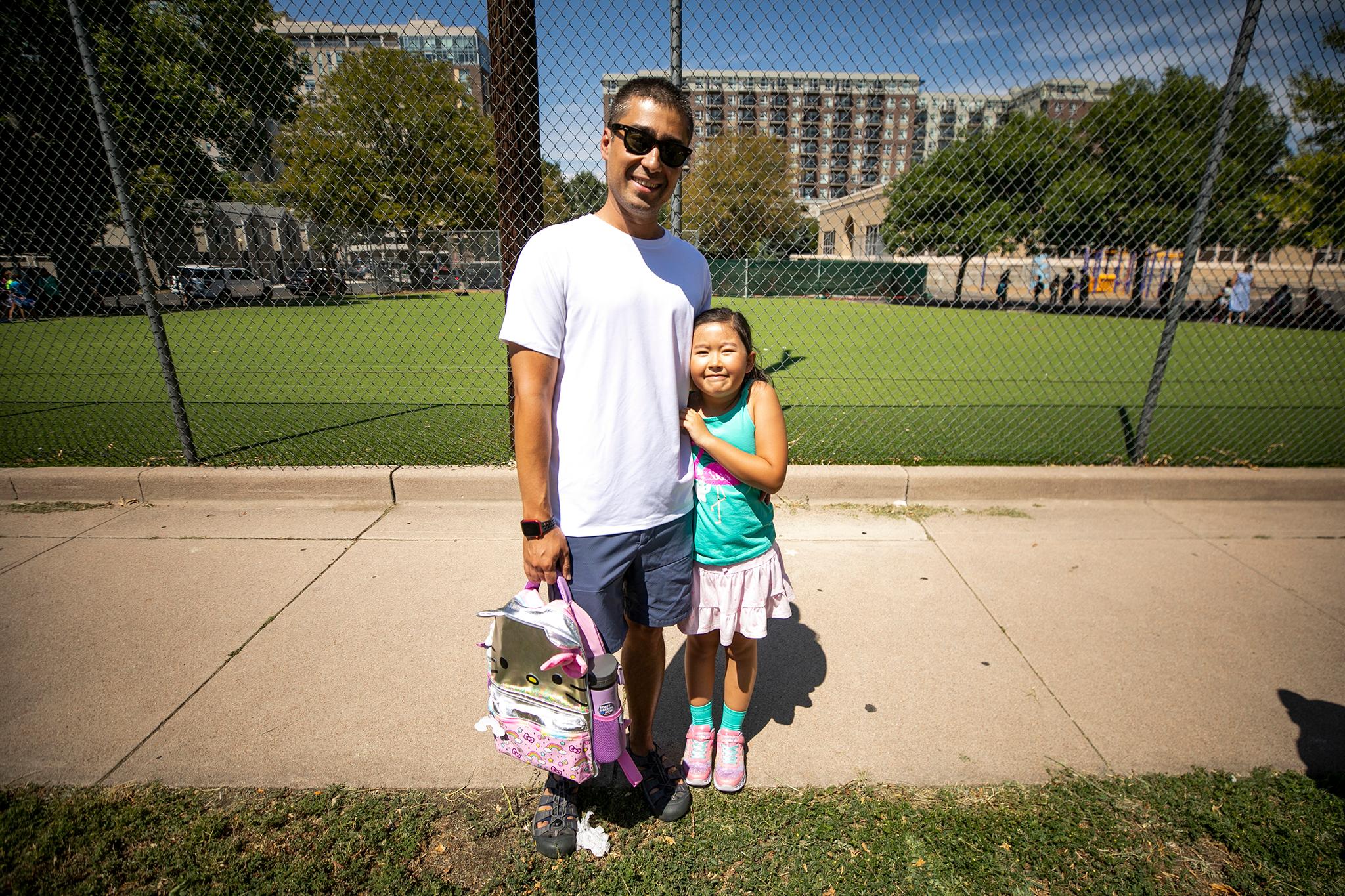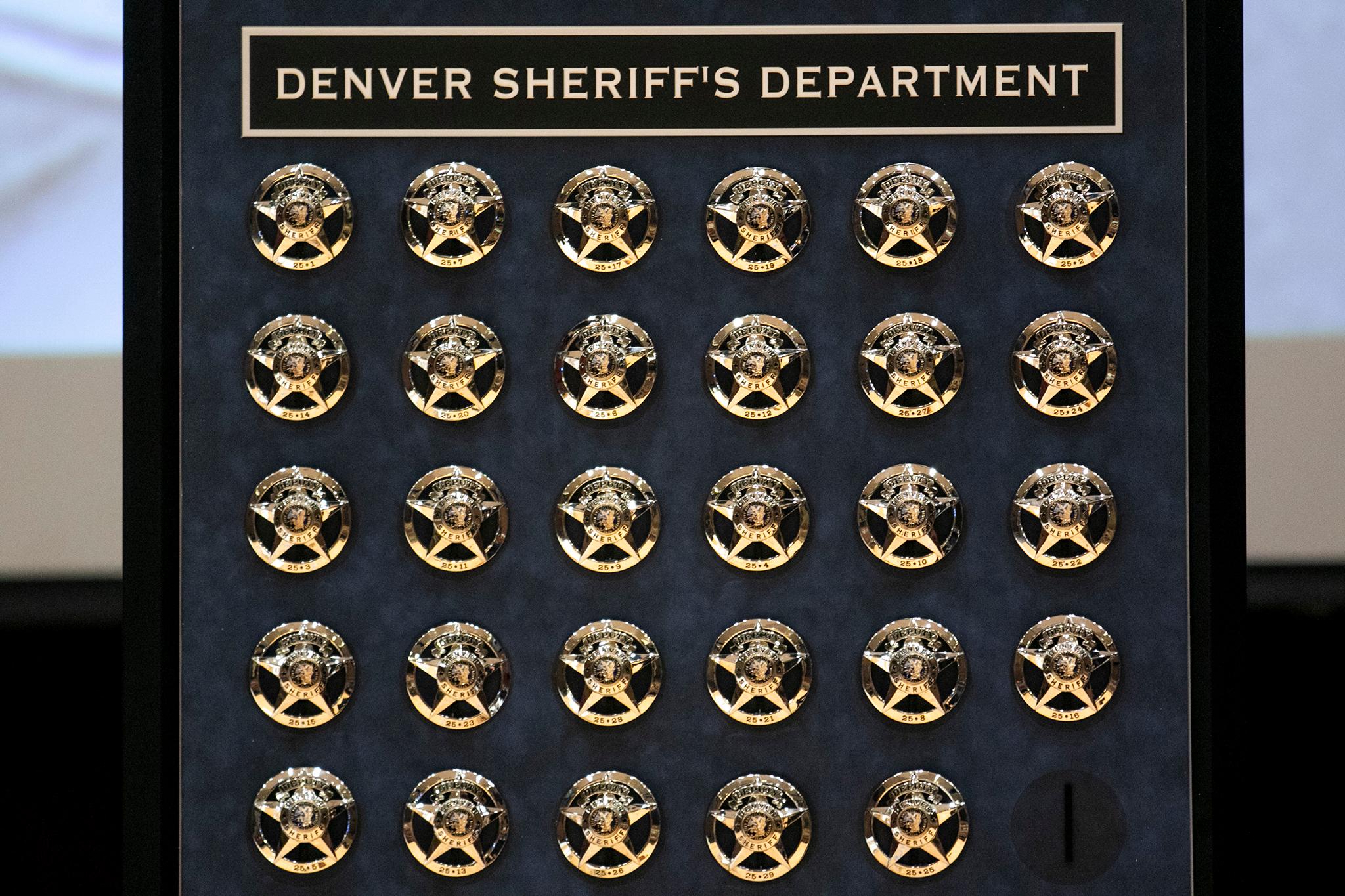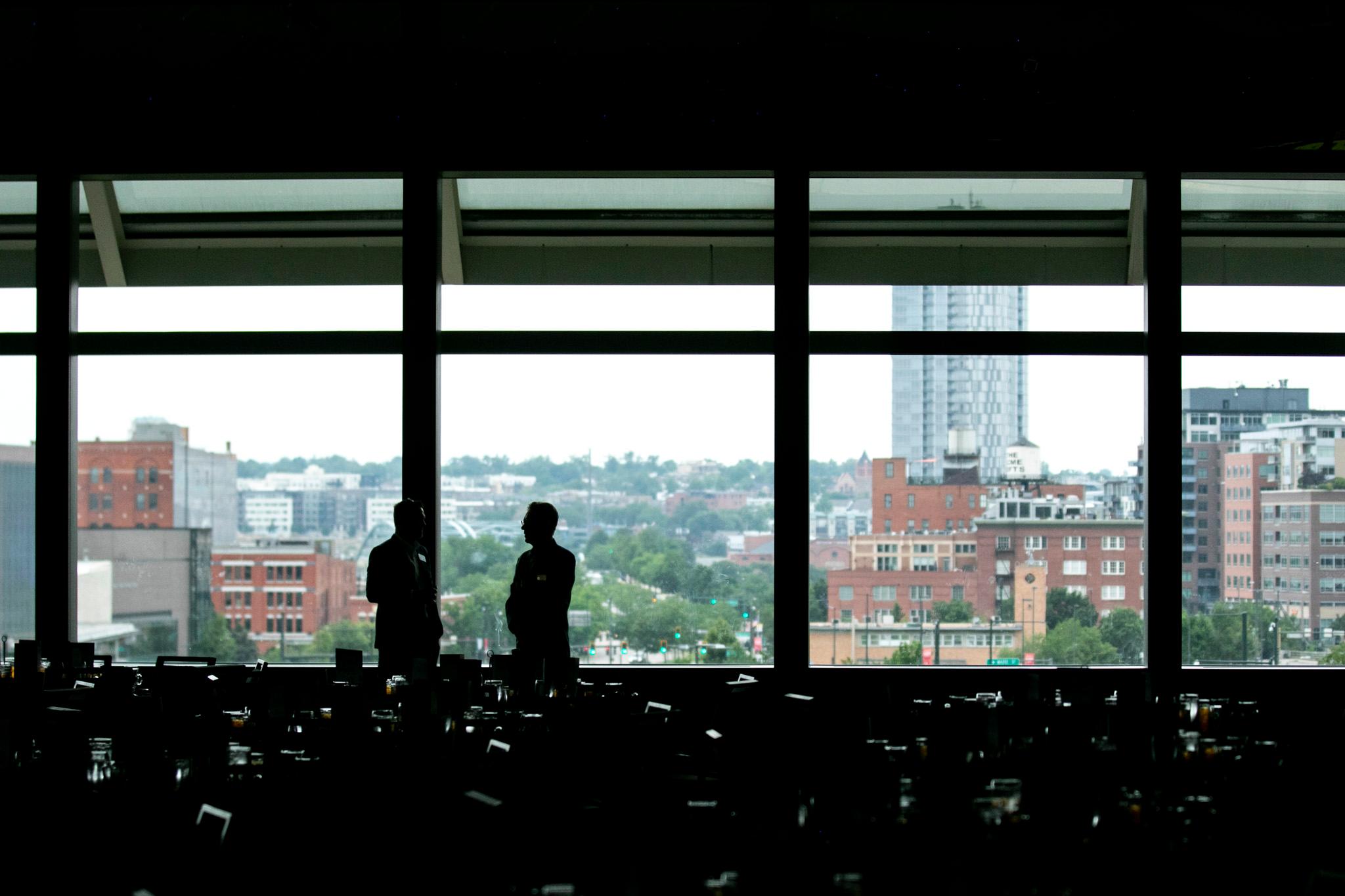On her second day of third grade, Emma Hawk packed a few pencils in a Hello Kitty backpack along with a water bottle full of ice and a fan.
Hawk ended up not needing them for very long. Her school, Polaris Elementary in Denver's Five Points neighborhood, cut classes short on Tuesday due to extreme heat and a lack of air conditioning.
Polaris was one of more than a dozen schools in the district that sent students home early after highs hovered close to 100 degrees. At least 17 schools also planned an early release on Wednesday as leaders expected temperatures in classrooms without AC to jump above 80 degrees.
"We didn't do a lot of learning," Hawk said about her shortened first day as her parents picked her up from school on Tuesday. "We just tried to meet each other more."
Reed Hawk, her dad, adjusted his work schedule to come pick his daughter up around lunch time. The school announced the heat day release via email the night before, so he had a little heads up to adjust his day around it, he said.
"Obviously she's the priority, so we kind of make due," he said. "I think the school is trying their best to keep everyone safe."

Heat has become a perennial issue for the district's older buildings. At least 43 schools don't have fully air-conditioned facilities.
When temperatures rise in classrooms, it can disrupt learning. Anything higher than 79 degrees can also pose health risks, along with significantly negative impacts on test performance and knowledge retention, according to the U.S. Department of Education. .
Last year, many schools without AC units lost about a week of classroom time due to early release heat days, said Scott Pribble, DPS' communications director.
"While we understand it's an inconvenience for many families, they understand the importance of why we're doing the work that we're doing," Pribble said.
Many of the district's buildings were constructed before AC was considered a given for new buildings. School years were also shorter, and didn't start as early in the summer as they do now, Pribble said.

The district has tried to upgrade facilities with AC units in recent years. Voters passed a bond measure in 2020 to fund renovations at 24 schools. So far, it has upgraded at least 11.
The rest will be done by 2024.
"Since COVID, we've run into supply chain issues, which has delayed some [AC] projects," Pribble said. "It's invasive work that can't be done when students are in the building, so that limits us."
At least 30 more schools in the district need AC, but funding has not been secured for them yet, he added.
Schools have tried other cooling methods, such as placing floor fans in classes and opening windows.
Still, heat days have emerged as the best solution to ensure safety at DPS. Parents and teachers unions generally support the idea, since it prioritizes students and staff's wellbeing.
On Tuesday, parents lined up in cars outside of Polaris Elementary school to pick up students around lunchtime.
Tope Dimmer leaned against the school's chain link fence, looking for her 1st grade daughter. She took a half day at work to pick up her kids early.
"It can be difficult to accommodate," Dimmer said. "This is our first heat day ever."

Dimmer's two sons, also students at Polaris, hung around as they waited for their sibling to come outside. Third grader Ade sketched in a coloring book while he waited.
"Are we gonna watch a movie?" Ade asked his mom.
"I think we're gonna stay inside, yes," his mom said.
Tolu, a fifth grader, announced that his teacher had assigned him extra homework to make up for the missed class time.
"He wants us to stay intact," Tolu said. "Even if we miss a day, we don't want to move backwards."
Once that's out of the way, it's playtime.











